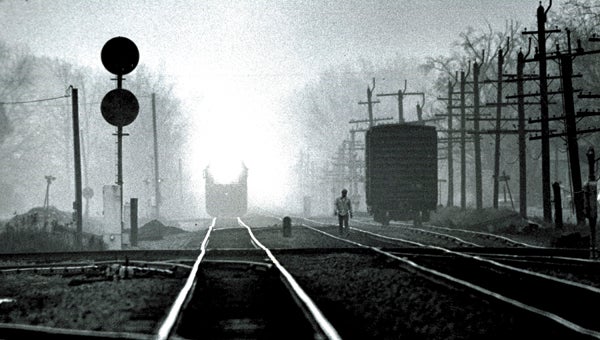Lonesome whistles
Published 10:46 pm Monday, January 20, 2014
The blast of train horns and the rumble of freight cars rolling along the tracks are the bane of many Suffolk residents’ existence, but they still are undeniably part of Suffolk’s aural fabric.
The sounds of trains first began disrupting life in Suffolk in 1834, when the arrival of the first cars on the Portsmouth and Roanoke Railroad was heralded not by horn blasts and clanging gates but by the neighing and clopping of horses, which pulled the cars on that railroad for the first few months until steam engines arrived with their whistles.
It took mere decades for miles of track owned by six different railroads to weave across Suffolk’s map — not to mention the spider’s web of rail spurs built to move lumber out of the Great Dismal Swamp. The fabric of life was forever changed — shipping products to and from market was easier, economic development boomed, flagmen and stationmasters had employment and became local institutions, and trips into town from the county became easier and more frequent.
In the same way the railroad shifted Suffolk’s economic center, it created tiny whistlestop towns throughout the county. Some names, like Holland, Whaleyville and Driver — already important crossroads before the railroads came — are still recognizable, while others are marked by little more than a bump in the road where the rails once crossed and perhaps a church or Ruritan Club bearing the name.
Lest some be tempted to wax nostalgic about the early days of rail in the city, a roar was created in 1837 when Suffolk was the site of one of the earliest railroad tragedies. A passenger train from Portsmouth collided head-on with a freight train carrying lumber, killing three people and injuring 140.
The frequency with which the trains came in those days, too, would have been much more bothersome to today’s motorists. In 1918, the Chamber of Commerce listed 32 passenger trains and 70 freight trains passing through the city.
But those trains were much shorter and on a somewhat regular schedule, unlike today, and fewer people lived within earshot of their eardrum-shattering blasts.
Most current residents consider them a nuisance, but trains have a long connection to the city that will likely never be undone. ←
— Compiled from information found in newsletters from the Suffolk-Nansemond Historical Society. Visit the organization’s website at www.suffolkhistory.org.






